Nicknamed “Trabi”, it perfectly suited what East Germany needed. However, that was also the reason why it gradually succumbed along with the Communist regime

Thirty-one years ago, the car industry witnessed an event whose description may vary a lot. Some people would say the Trabant became a unique piece of automotive history. Others would rather say it was put out of its misery. To some extent, both versions are not far from reality. The truth, however, is that we will only be able to understand everything this car meant once we immerse ourselves in its background.
If you search the Trabant online, you will see lots of derogatory content. Weak performance, poor overall quality, low reliability, high pollution… And, again, that is not far from reality. However, there is more to it. We are talking about a car model designed and built in a context of scarce resources and political unrest. This article is going to introduce the iconic East German car to you with all those aspects considered.
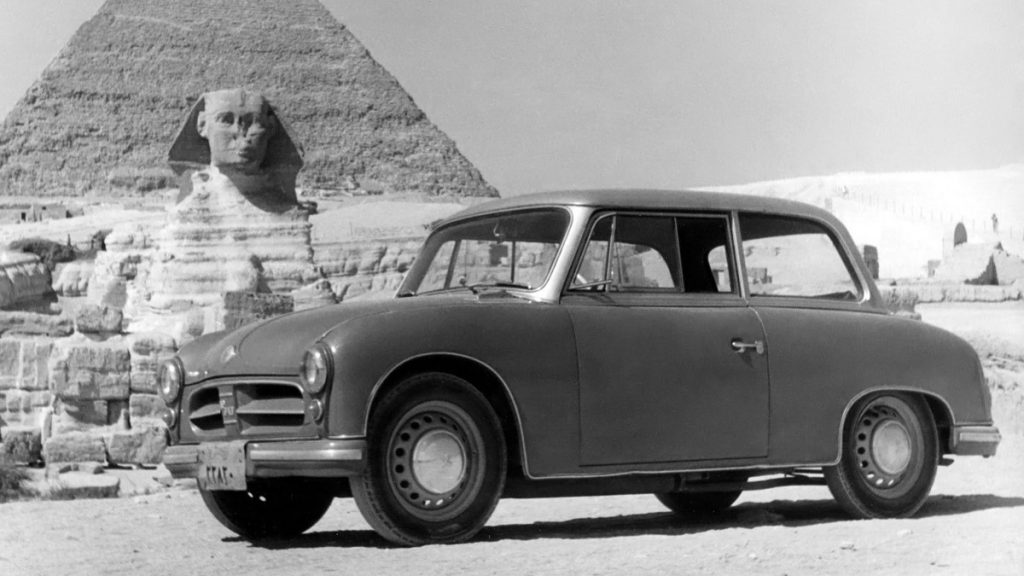
The early Soviet cars
Once World War II ended, Soviet authorities took over DKW’s plant located in the German city of Zwickau. At first, they resumed production of the F8 and even updated its design to create the F9. However, it was clear that a pre-war project was too old by the 1950s. That factory, renamed Automobilwerk Zwickau, developed a new car model by 1955. The numbers in the “AWZ P70” name came from its 700-cc engine.
The “P” stands for “plastic” or, to be more specific, Duroplast. It is a resin plastic reinforced with fiber from the textile industry such as cotton and wool. AWZ made the car’s body using that material for the simple reason that East Germany had scarce iron reserves, which would render mass production of steel inviable. Duroplast would outlive the AWZ P70 and equip its direct successor, the Trabant P50, starting in 1957.
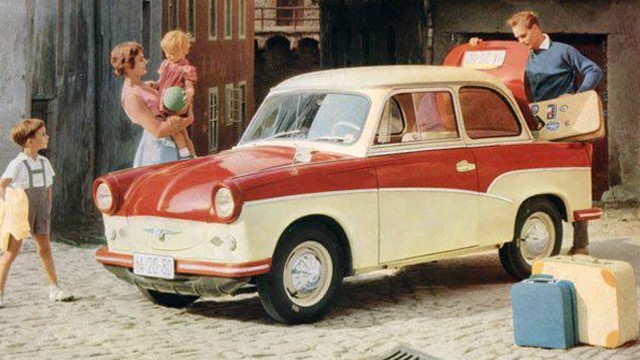

Trabant P50 and P60
Communist principles consider cars as simple means of transportation. The Trabant was designed to seat two adults and two children while being cheap to buy and easy to repair. It used common design features of the 1950s, such as rounded shapes and two-tone paint, but it was easy to see that there was no luxury. The Limousine version offered a more charming style while the Kombi offered more room for baggage.
The initial 500-cc engine had two cylinders and the two-stroke design which DKW made famous. The 18 hp of power would only take the Trabant up to 60 mph, but that was clearly not a priority. The engine had had problems quite often, but it was so simple (only five moving parts) that the owners could solve most of them using simple tools. The P60 had some design upgrades and a 600-cc engine good for 23 hp.

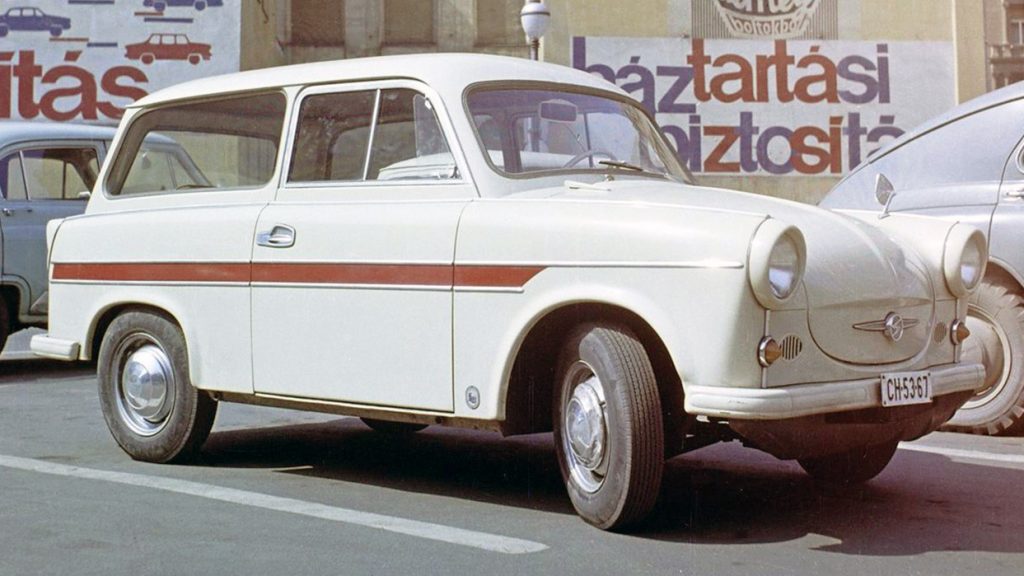
Trabant 601
The third generation brought new design updates on the front and roof. There were other improvements in the technical part, including a new carburetor. Fuel consumption was lower and the top speed slightly higher, but still far from impressive. The initial goal was to build this car for only four years, but the local government went through several problems over time. Replacing the Trabant 601 was just not a priority.
If you are familiar with automotive history, you will know that keeping the same car in line for a long time is challenging. Regulations become stricter, competitors become more advanced, and people simply want something newer. However, we have to keep in mind that the Trabant existed in a whole different context. We are talking about a society in the 1960s with different principles and a severe shortage of resources.
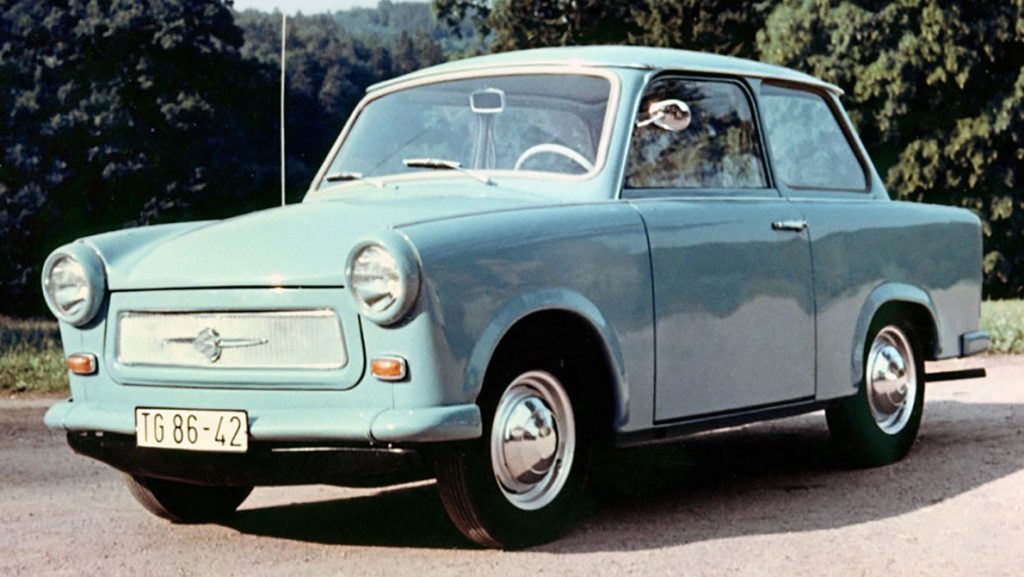
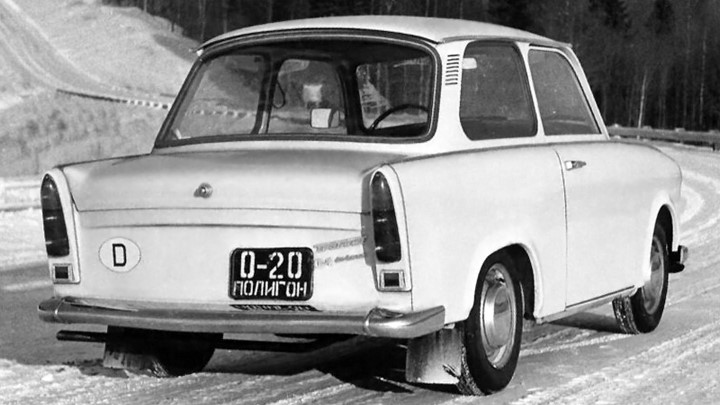
Third time is the charm?
The communist government forbade any attempts of improving the Trabant because it did not want it to become a luxury. Then again, it would not have resources to do so. It was already challenging to build the existing car despite how simple it was. There were other options within the Soviet Union, like Dacia, Škoda and Wartburg, but most people could not afford any of those. Not to mention afford their future repairs.
As a result, things were difficult from the beginning. Production simply could not keep up with demand, so waiting times reached ten years. People had to apply for a Trabant at the factory, and they would do so when their child was born or started school, for example, to get it by the time the child was a teenager. It was wise to start saving until then, because its base price was over ten times the yearly average income.
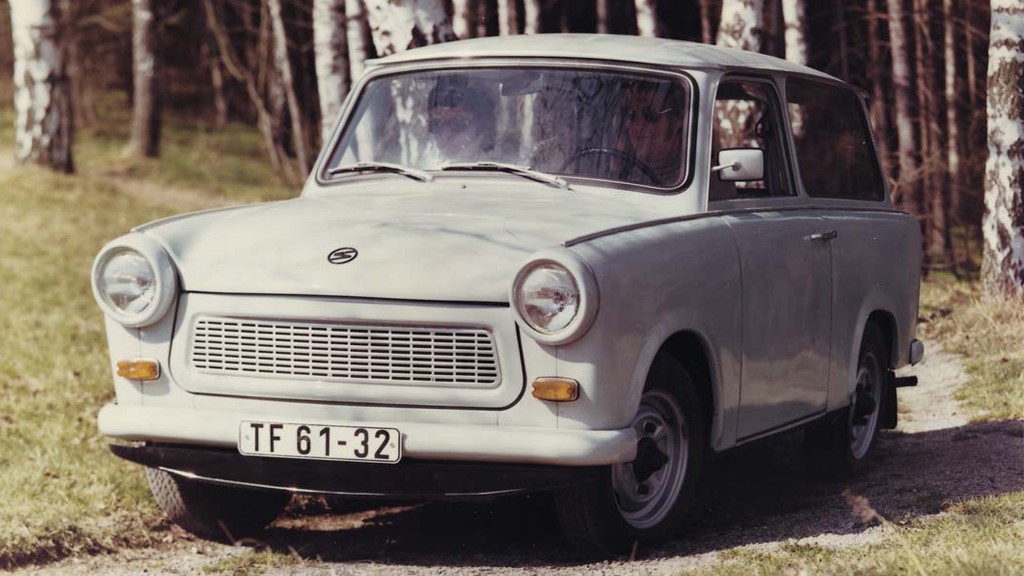

Living with the Trabant car
The two-stroke engine would burn lubricant along with gasoline like in most DKW cars. When refueling, it was necessary to shake the tank after adding both fluids to mix them. And the car would emit a thick and black exhaust gas with strong smell. At least people usually took good care of it, since it was so difficult to buy. In fact, used cars quickly became more expensive than new ones because they were readily available.
Over time, people tried to modernize their Trabant by replacing the engine with a four-stroke one – it was common to use the Fiat 128‘s. Once the car could no longer work, owners would dismantle it and salvage suitable parts to keep as spare for a new car. In fact, some drivers would keep items like timing belts and spark plugs in the trunk because it was that common for them to fail. And that leads us to a new chapter.
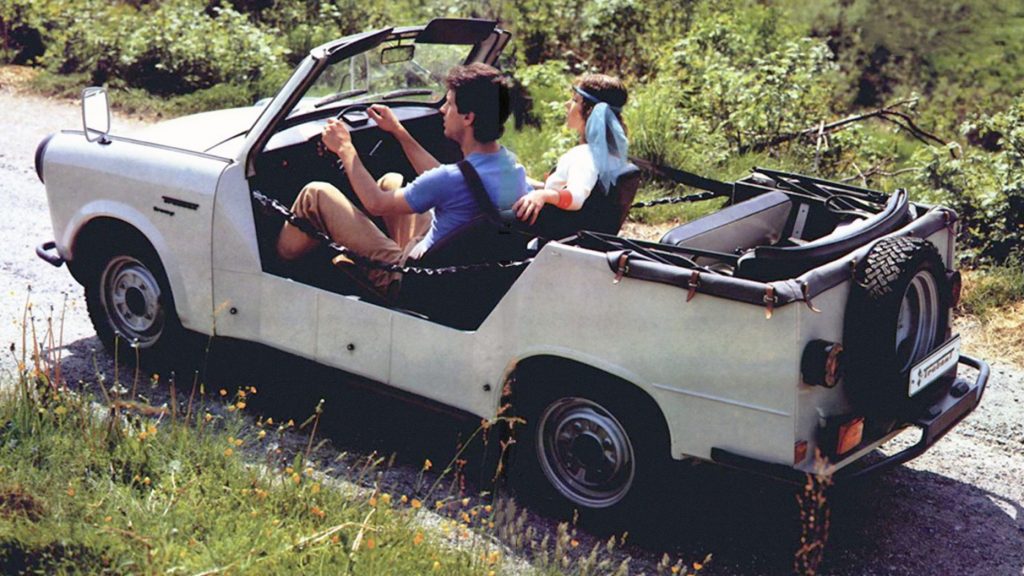
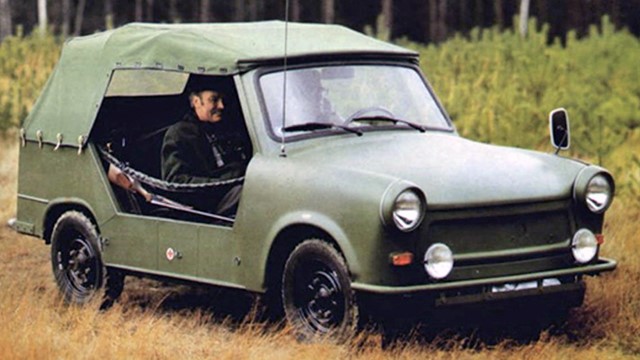
Let the Trabant jokes begin!
After leading the space race in the 1950s, we all know what happened to the communist regime over the years. Trabant’s manufacturer developed two utilitarian versions and even some prototypes of an all-new car, but there was no funding for the latter. Besides that, living standards were low and people would try to flee to West Germany even after the Wall was erected. They would do whatever they could to survive.
Political jokes eventually became popular as a pacific protest. While most targeted the authorities and the economy, some aimed at the car as well. What is the longest car on the market? – The Trabant […] 2 meters of car, plus 10 meters of smoke and A new Trabi has been launched with two exhaust pipes – so you can use it as a wheelbarrow are only two examples. There was a time when Škoda faced the very same situation.
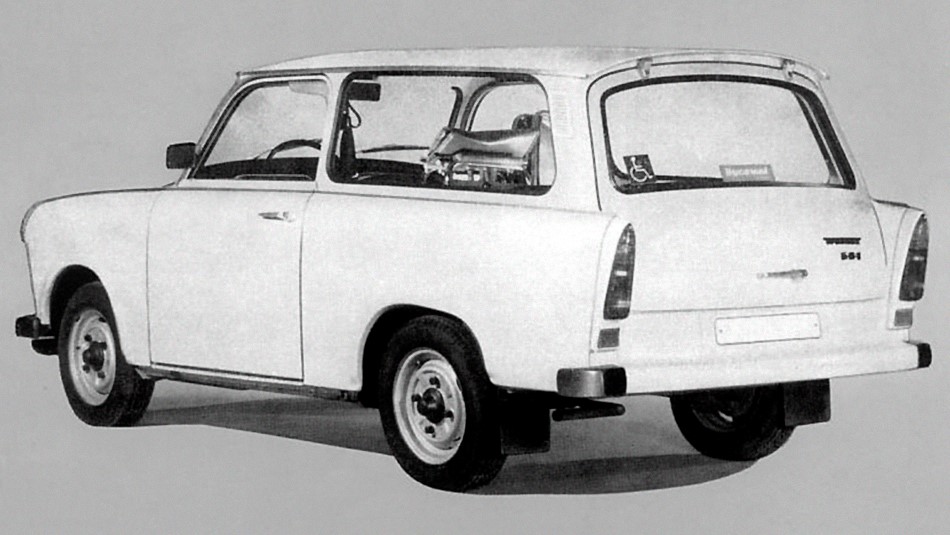
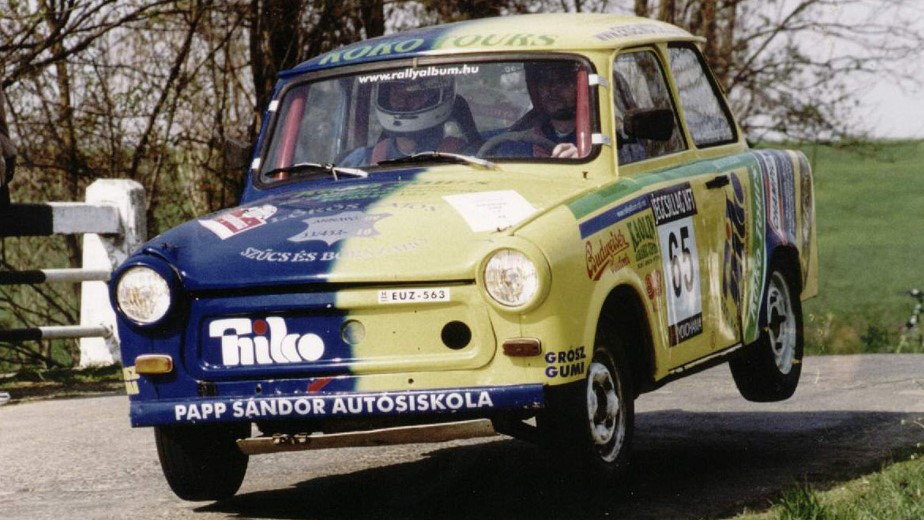
Post-wall sales decline
While all those issues were alarming, people simply had nothing else to buy at that price. The automaker toyed with the plans of a successor, and even built prototypes, but had no means or permission to follow through. The Trabant car just lived on year after year. Things would only change in 1989: once the Berlin Wall fell, dozens of these cars were seen lined up to flee East Germany in what was named the Trabi Trail.
The last improvement that actually reached the streets came in 1990. The Trabant 1.1 was named after the four-stroke Volkswagen engine built under license. While it made the car’s performance slightly better, it was too little, too late. People were already buying Western cars en masse, so the Trabi’s demand quickly plummeted. The plant officially ended its production on April 30th, 1991 after a total of 3,069,099 units.
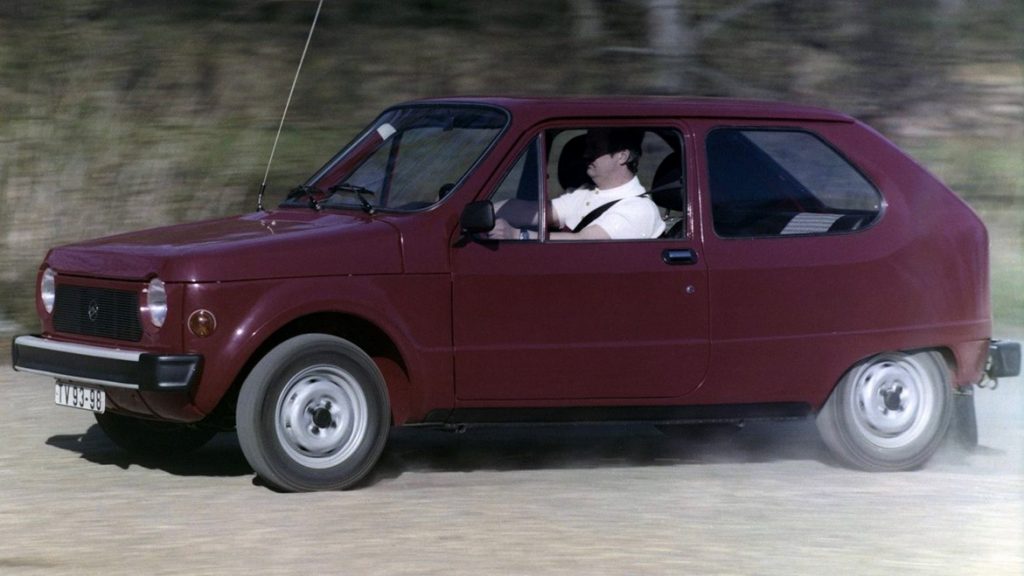

Trabant cars in nowadays
At first, many Trabant cars were quickly discarded. People would sell them cheap or even give it away. No one wanted them anymore and, even if they did, they would not meet Western emission standards. That move shed light on another problem: Duroplast turned out not to be recyclable. A German lab eventually found a bacterium that can consume it. Parallel to that, fragments were used in pavement construction.
The Trabant would only be appreciated again years later, this time as a relic. It was developed at a time of communist prosperity, yet it gradually went down along with the regime as a whole. Nowadays, there are around 33,000 units still active and restored to top condition. Some of their owners claim to need nothing but basic parts for maintenance. And they can do most of their work themselves just like back in the day.
East Germany made the Trabant to be a utilitarian car, so one could not expect much from the beginning. However, that society was living in such a challenging situation that the car ended up with characteristics that were rare even then. While we are all happy to have left those times, preserving the Trabant is a great way to preserve the memory of a completely different way of life which tried to prosper decades ago.
Danillo Almeida has explored his passion for cars in two distinct ways. The first one is his graduation course in Mechanical Engineering, which will hopefully lead to a job position in the field. The other one is expressing his knowledge and opinions on the matter through writing. Almeida has already contributed to blogs, stores, and websites in general writing automotive content in many formats.



